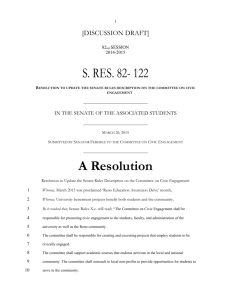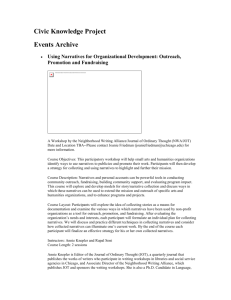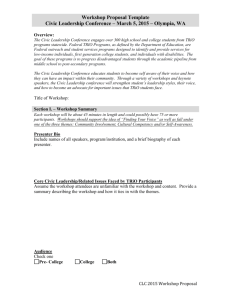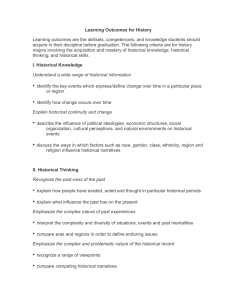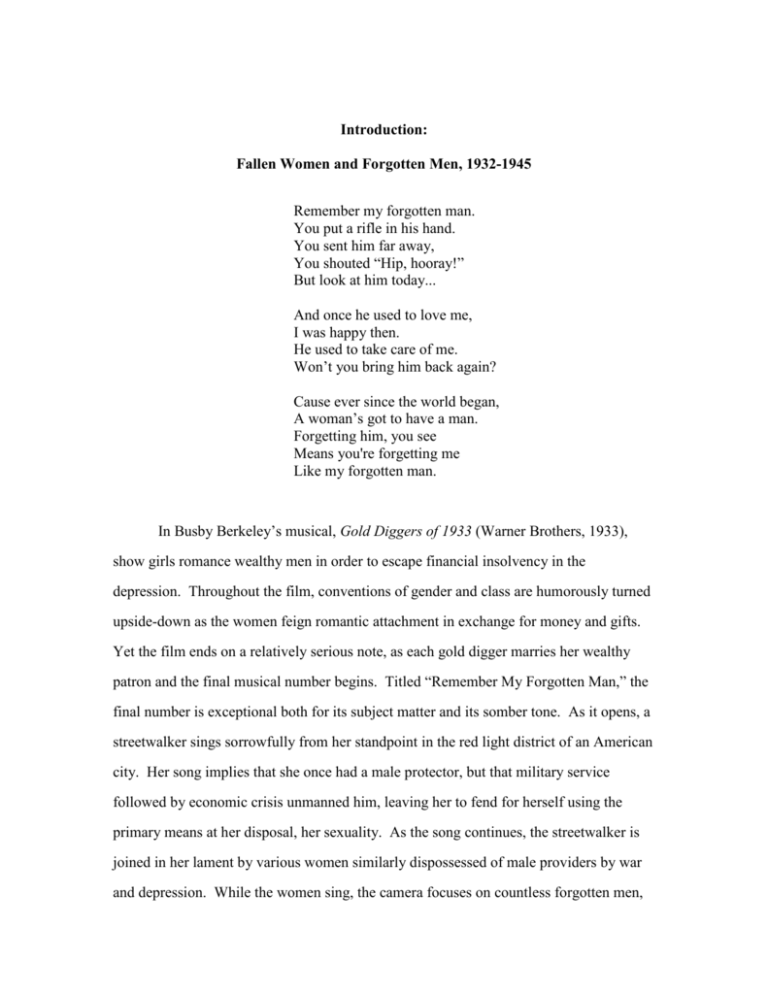
Introduction:
Fallen Women and Forgotten Men, 1932-1945
Remember my forgotten man.
You put a rifle in his hand.
You sent him far away,
You shouted “Hip, hooray!”
But look at him today...
And once he used to love me,
I was happy then.
He used to take care of me.
Won’t you bring him back again?
Cause ever since the world began,
A woman’s got to have a man.
Forgetting him, you see
Means you're forgetting me
Like my forgotten man.
In Busby Berkeley’s musical, Gold Diggers of 1933 (Warner Brothers, 1933),
show girls romance wealthy men in order to escape financial insolvency in the
depression. Throughout the film, conventions of gender and class are humorously turned
upside-down as the women feign romantic attachment in exchange for money and gifts.
Yet the film ends on a relatively serious note, as each gold digger marries her wealthy
patron and the final musical number begins. Titled “Remember My Forgotten Man,” the
final number is exceptional both for its subject matter and its somber tone. As it opens, a
streetwalker sings sorrowfully from her standpoint in the red light district of an American
city. Her song implies that she once had a male protector, but that military service
followed by economic crisis unmanned him, leaving her to fend for herself using the
primary means at her disposal, her sexuality. As the song continues, the streetwalker is
joined in her lament by various women similarly dispossessed of male providers by war
and depression. While the women sing, the camera focuses on countless forgotten men,
first marching in military formation, then standing in breadlines still dressed in military
attire. The number ends spectacularly, as the frame fills with jobless men dressed in
military garb, marching concentrically around the prostitute who holds center stage.
The forgotten man number was oddly out of place at the end of Berkeley’s
musical comedy. Yet its position there tells us something about the broader climate of
gender and politics in the Great Depression. The musical number dramatized Americans’
fears that jobless men were growing indifferent to their responsibilities as husbands and
providers. At a time when social critics increasingly described jobless Americans as a
“vast army of the unemployed,” it represented the unemployed population as a real army
– one whose members had served their country in World War I, only to be disillusioned
by that war’s profit motive and by their own joblessness in the depression.
As Berkeley’s forgotten man number exemplifies, masses of unemployed men
evoked sympathy in the early depression years. Yet they also evoked fear. In Berkeley’s
musical, the uniforms that the unemployed veterans wear grow increasingly tattered, but
their weapons remain intact. Their costumes imply that, having been trained by the
government as a collective fighting force, such veterans might easily turn their weapons
against the state. The forgotten man thus represents not only the failure of masculine
providership, but also the distinct possibility of organized political upheaval in the
depression. The existence of such fear might help to explain the excessive force that
Hoover employed in dispersing the Bonus Army veterans in the summer of 1932. It
might also help to explain the election-year popularity of Franklin D. Roosevelt, who
campaigned vigorously on the promise to remember the forgotten man, restoring him to
masculine providership and diffusing his potential as a disruptive political force in the
depression.
Berkeley’s reference to World War I at the end of Gold Diggers of 1933 has
another significance as well. Not only does it reveal the intertwining of gender and
political anxieties embodied in the figure of the forgotten man, but from its vantage point
2
at the outset of the New Deal, it also refers back to an earlier moment of state
intervention in ordinary Americans’ lives. As William E. Leuchtenberg observes,
Americans at the outset of the New Deal were not accustomed to an interventionist state;
most adhered to liberal principles of limited government and relatively unlimited freedom
and responsibility for the individual.1 Yet the depression forced countless Americans to
depend on some form of community relief, undermining their status as self-sustaining
citizens and creating a window of opportunity in which the terms of obligation and
entitlement binding citizens to the state could be revised. Not since the First World War,
Leuchtenberg observes, had Americans seen a federal bureaucracy anything like that
which emerged in the New Deal’s first one-hundred days. Throughout the New Deal
years, references back to World War I helped Americans make sense of changing
concepts of state responsibility and individual entitlement. As Gold Diggers of 1933
exemplifies, such references to the war expressed a desire for renewed federal
intervention, but they also recalled an instance of state expansion that many Americans
viewed as undemocratic in its consequences for ordinary citizens.2
The figure of the forgotten man thus stood at the center of a range of gender and
political concerns in the depression. Most crucially, it stood at the center of concerns
about citizenship, statehood, and national community. As a symbol, it was widely
contested, appearing frequently in popular culture, in politics, and in the conversations
and correspondence of ordinary Americans. Along with other gendered figures, such as
the wandering youth, the homosexual transient, and the emasculating wife, it expressed
Americans’ concerns about the shifting contours of U.S. civic culture, particularly the
growing imbalance between longstanding masculine ideals of self-reliance and local civic
1William E.
Leuchtenberg, The FDR Years: On Roosevelt and His Legacy (New York: Columbia
University Press, 1995), 35-75.
2 Michael Sherry, In the Shadow of War: The United States Since the 1930’s (New Haven: Yale University
Press, 1995), 15-63.
3
autonomy, on the one hand, and the potentially emasculating effects of New Deal
bureaucratic centralism, on the other.
My broader project is a study of gender and civic culture in the period 1932-1945.
Focusing on gendered rhetoric and practice, first in the case of federal emergency relief,
then in the context of wartime civilian agencies, I analyze the unequal distribution of
national political power throughout the Roosevelt years. Feminist historians have
examined the discriminatory aspects of permanent Social Security measures like Old Age
Insurance and Aid to Dependent Children.3 In contrast, this project focuses primarily on
lesser-studied emergency agencies that operated throughout the period 1932-1945. While
historians typically differentiate the depression and war periods, I view them as a
continuous moment in which federal administrators and other contestants for national
political power adapted a series of gendered stories and images to the changing
imperatives of U.S. civic life.
My approach builds on the concept of civic storytelling articulated by Rogers
Smith. In his work on U.S. citizenship law, Smith suggests that aspirants to political
power craft “compelling narratives of collective civic identity” in order to garner public
support for their leadership claims. In fashioning such “compelling stories,” Smith
argues, politicians draw on “any and all pre-existing sources of common civic identity”
that they believe will advance their goals. While Smith focuses on elite authorship of
compelling civic narratives, I borrow his formulation of civic storytelling to explore the
3
Linda Gordon, Pitied but not Entitled: Single Mothers and the History of Welfare, 1890-1935 (New York:
Free Press, 1994); Barbara Nelson, “The Origins of the Two-Channel Welfare State: Workmen’s
Compensation and Mother’s Aid,” in Linda Gordon, ed., Women, the State, and Welfare (Madison:
University of Wisconsin Press, 1990), 123-152; Robyn Muncy, Creating a Female Dominion in American
Reform, 1890-1935 (New York: Oxford University Press, 1991); Seth Koven and Sonya Michel, ed.,
Mothers of a New World: Maternalist Politics and the Origins of Welfare States (New York: Routledge,
1993); Theda Skocpol, Protecting Soldiers and Mothers: The Political Origins of Social Policy in the
United States (Cambridge, Mass. : Belknap Press of Harvard University Press, 1992); Suzanne Mettler,
Dividing Citizens: Gender and Federalism in New Deal Public Policy (Ithaca: Cornell University Press,
1998); Alice Kessler-Harris, In Pursuit of Equity: Women, Men, and the Quest for Economic Citizenship in
20th-century America (New York : Oxford University Press, 2001).
4
dynamic interplay of popular and elite narratives of collective civic identity in the
depression and World War II.4
In my study of the depression, I focus on the dialectical interplay between popular
and official narratives of forgotten manhood, fallen womanhood, inveterate hoboes, and
wandering youth. I explore how federal relief officials drew on gendered stories of
collective civic identity to enlist popular support for the expansive New Deal state. Yet I
also consider how political opponents seized on those same narratives to contest New
Deal authority. In addition to exploring how widely circulating civic narratives shaped
the rhetoric of state, I also consider the relationship between rhetoric and practice within
a series of federal agencies. The forgotten man was not just a compelling figure of
collective civic identity; his white, male, breadwinning counterpart was also the prime
beneficiary of federal emergency relief. Similarly, the New Deal’s collusion in the
popular rhetoric of woman-blaming had practical consequences, diminishing women’s
opportunities to participate in federal relief programs. Exploring connections between
popular civic narratives, their official versions, and actual relief practices entails looking
at a wide range of sources, including oral history, popular print and filmic narratives,
political speeches, and government documents. It also entails close attention to the
institutional histories of specific New Deal programs.
In shifting my focus from depression to war, I look at the emergence of new civic
narratives that similarly feature stock characters of twentieth-century U.S. civic culture:
mature, white breadwinners newly outfitted for civilian defense work and physically
potent soldier-youth, as well as a host of gender and sexual outsiders: meddlesome
civilian women and “faithless” service wives, disloyal Kibei youth, and intensely
sacrificial Nisei soldiers. Using a wide range of government documents and popular
cultural texts, I connect these figures’ stories to two agencies of the wartime state: the
4
Rogers Smith, Civic Ideals: Conflicting Visions of Citizenship in U.S. History (New Haven: Yale
University Press, 1997), 6.
5
Office of Civilian Defense, which idealized the mature civilian defender, and the War
Relocation Authority, which elaborated on loyal and disloyal figures of JapaneseAmerican manhood.
Overall, this study differs from more conventional histories of New Deal state
formation in its focus on civic narratives and the political insights that narrative analysis
affords. On the one hand, I use sources like government records, public opinion polls,
and personal correspondence to explore how gender, racial, and sexual differences
informed Americans’ lived experience of citizenship in the depression and World War II.
But as Eve Sedgwick observes, in order to fully understand the relationship of gender,
race, and sexuality to political power, “an analysis of representation is also necessary.”
In particular, Sedgwick argues, narrative analysis is crucial if we wish to apprehend “the
really very different intuitions of political immediacy that come to us from the sexual
realm.”5 Certainly, studying the narrative operations of New Deal hegemony enriches
our understanding of the sexual politics of the emergent welfare state, as well as its
gender and racial politics. Looking at how gender, sexuality, and race factor into popular
civic narratives, and then at how those narratives in turn shape federal policy, enforces
the cultural materialist point: stories play a crucial role in setting the horizon of political
possibility in ordinary people’s lives.
An examination of civic stories also reveals the centrality of kinship metaphors to
mid-twentieth-century imaginings of U.S. civic community. Lauren Berlant and Michael
Warner note that “the family form has functioned as a mediator and metaphor of national
existence in the United States since the eighteenth century.”6 Certainly, many depression
and wartime civic narratives imagined the nation in idealized heterosexual terms, as a
well-ordered, male-headed home. But some narratives imagined the nation in idealized
5
Eve Sedgwick, Between Men: English Literature and Male Homosocial Desire (New York: Columbia
University Press, 1985), 7.
6 Lauren Berlant and Michael Warner, “Sex in Public,” Critical Inquiry 24:2 (Winter 1998), 549-550.
6
homosocial terms, as a military fraternity. Tensions between homosocial-fraternal and
heterosexual-familial models of national community animated many depression-era and
wartime civic narratives, and this, too, had meaningful consequences for the gender,
racial, and sexual dimensions of U.S. civic membership.
Etienne Balibar notes that imagining the nation as a symbolic kinship has racial
implications, since idealized kinship structures are typically racially endogamous.7 The
forgotten man of the depression and the mature civilian defender of World War II
embodied gendered notions of patriarchal power, but they also embodied whiteness.
Similarly, depression-era CCC youth and virtuous citizen-soldiers during the war
embodied racially exclusive ideals of military brotherhood. Thus the centrality of kinship
metaphors to New Deal and wartime civic culture diminished the membership claims of
many groups: white women and homosexuals certainly, but also African Americans,
Japanese Americans, and other Americans of color.
Recent scholarship on the role of emotions in politics notes that the mobilization
of hatred or ill will toward civic outsiders is a crucial means of delineating a common
civic identity. Sara Ahmed notes that scapegoating outsiders promotes both negative and
positive attachments; she writes, “The passion of . . . negative attachments to others is
redefined simultaneously as a positive attachment” to those who can claim membership
in the privileged social group. Ahmed puts it this way: “Together we hate, and this hate
is what makes us together.”8 In what follows, I build on Ahmed’s insight in drawing
attention to the centrality of gender, racial, and sexual scapegoating to several influential
civic narratives.
Lauren Berlant also explores the affective dimensions of public life. In her work
on sentimentalism and American culture, she argues that publics form through members’
7
Etienne Balibar, "The Nation-Form: History and Ideology," in Balibar and Immanuel Wallerstein, ed.,
Race, Nation, Class: Ambiguous Identities (New York: Verso Press, 1988), 100, 102.
8 Sara Ahmed, “Affective Economies,” Social Text 22.2 (2004), 118.
7
affective engagement with emotionally satisfying genres of popular culture. While
Berlant characterizes the genres and publics she studies as “juxtapolitical,” my project
examines affective publics that are formed through engagement with more explicitly
political narratives. I approach each of the recurrent narratives that form the basis of my
study as a distinct civic genre. Following Berlant, I analyze the “affective intensities and
assurances” that the each type of civic story afforded, and I factor that information into
my broader assessment of how Roosevelt administrators used gendered civic narratives to
enlist popular support for the nation-building project of the New Deal state.9
While kinship metaphors are a crucial resource in imagining the collective body
of the nation, so too are individual human bodies, with all of their markings of cultural
difference. Thinking about the relationship of individual bodies to the body of the nation
is crucial to understanding the affective dimensions of U.S. national citizenship. Several
of the civic narratives that I explore center on the disposition of individual bodies in
relation to established hierarchies of gender, sexuality, race, and class. Many center on
the deviant bodies of prostitutes and hoboes, juvenile delinquents and misbehaving
wives. During the tumultuous depression and war years, civic narratives that focused on
sexually deviant outsiders enabled a community of civic insiders to cohere. Such stories
also evoked intense emotional responses, for as Michel Foucault observes, discourses of
sexual deviance entail “complex mechanisms of excitement and incitement”; they
“function with a double impetus: pleasure and power.”10
The work of cultural anthropologists, particularly Mary Douglas and Victor
Turner, is also critical to understanding both the importance of narrative and ritual in
forging group identity and the role that cultural differences play in maintaining political
power. Douglas and Turner theorize the importance of “marginal” or “liminal” bodies in
9
Lauren Berlant, The Female Complaint: The Unfinished Business of Sentimentality in American Culture
(Durham: Duke University Press, 2008), 4.
10 Michael Foucault, The History of Sexuality(New York: Pantheon Books, 1978), 48, 45.
8
articulating designs of order or symmetry within a given social system. Moreover, they
observe that marginal or liminal bodies are often associated with sexual transgression or
danger. Douglas writes that “many ideas about sexual dangers are better interpreted as
symbols of the relationship between parts of society, as mirroring designs of hierarchy or
symmetry which also apply in the larger social system.”11 Consistent with Douglas’
insight, Jennifer Terry, Nayan Shah, and George Chauncey note that efforts to regulate
sexual deviance in the early twentieth-century United States were never strictly about sex
but were also about desires to fortify unstable class, ethnic, and racial hierarchies.
According to Terry, emergent anti-homosexual discourses “reflected a conservative
reaction to modern life” as well as “larger political concerns over the proper management
of diversity in the United States.”12 In separate studies of early twentieth-century
America’s diverse bachelor subculture, Shah and Chauncey likewise connect intensified
efforts to police homosexuality to broader fears of class and racial instability.13
When Busby Berkeley translated the nation’s economic crisis into a fallen
woman’s lament for her forgotten man, he contributed to a process of civic storytelling
that had tremendous gender and political consequences. A close analysis of stories like
Berkeley’s and their relationship to discourses and practices of citizenship affords us
“really very different intuitions of political immediacy” than we garner from traditional
sources and methods of inquiry. Among other things, narrative analysis illuminates the
gender, sexual, and racial operations of political power in novel and constructive ways.
Certainly, applied to civic developments in the depression and World War II, it sheds
11Mary Douglas,
Purity and Danger: An Analysis of Concepts of Pollution and Taboo, (New York:
Praeger, 1966), 3-4. See also Victor Turner, The Ritual Process: Structure and Anti-structure.(New York:
Aldine Press, 1969).
12 Jennifer Terry, An American Obsession: Science, Medicine, and Homosexuality in Modern Society
(Chicago: University of Chicago Press, 1999), 75.
13 George Chauncey, Gay New York: Gender, Urban Culture, and the Making of the Gay Male World,
1890-1940 ( New York: Basic Books, 1994); “Policing Privacy, Migrants and the Limits of Freedom.”
Social Text 23:3-4 (Fall-Winter 2005), 279-281.
9
valuable new light on the gender, sexual, and racial inequities of the emergent U.S.
welfare state.
Each of the following chapters examines the interplay between a series of
gendered civic narratives and the particular federal agencies with which they were in
dialogue. Each is organized along two fronts, one focusing on a particular gendered
narrative of collective civic identity, and the other focusing on the institutional history of
a particular federal agency or group of related agencies. My purpose in each chapter is to
illustrate the interrelationship between these two fronts, thus demonstrating the benefits
of rhetorical analysis for understanding the gender, sexual, and racial inequalities of the
emergent welfare state.
My first chapter, “The War to Save the Forgotten Man: Gender. Citizenship, and
the Politics of Work Relief,” examines how various narratives of forgotten manhood
affected the course of federal emergency relief. I begin by elaborating the story of
forgotten manhood as it emerged and quickly proliferated during the 1932 presidential
campaign. I then examine how New Deal officials developed federal emergency relief
measures that addressed the plight of the forgotten man. Relief officials emphasized the
New Deal’s role in revitalizing forgotten manhood, conflating national recovery with the
renewed vitality of the male-headed home. The course of the forgotten man narrative
illustrates one of the pitfalls of political storytelling, which is that other people can tell
their own versions of the story. What began as a single narrative of forgotten manhood
that justified New Deal relief became a series of narratives, some of them quite contrary
to New Deal policies. The interplay of narratives and counter-narratives of forgotten
manhood throughout the period 1933-1939 and its impact on the policymaking process is
at the center of this chapter. Throughout the chapter, I relate the practice of civic
storytelling to the fraught history of a succession of federal agencies, including the
10
Federal Emergency Relief Administration, the Civil Works Administration, and the
Works Progress Administration.
Related to popular and official narratives of forgotten manhood were sensational
accounts of transient “perversions” – particularly those involving the seduction of
“impressionable youth” by older, inveterate hoboes. Such narratives pervaded American
culture, infusing not only popular cultural forms but the political rhetoric and practices
that served to delimit the sexual, racial, class, and generational contours of citizenship in
the emergent welfare state. In my second chapter, I investigate why narratives of
transient homosexuality loomed so large in the Depression-era political imagination.
I
ask what cultural work these stories, a striking number of which boiled down to
intergenerational sex between men, performed. And focusing on the unpopular Federal
Transient Program, I examine how such stories influenced emergent concepts of
citizenship and nation-statehood in the transformative New Deal years.
The Civilian Conservation Corps was the first and most popular of all of
Roosevelt’s relief programs. My third chapter contemplates that popularity as it relates to
stories of “wild boys on the loose” that circulated widely in the early depression years. As
Mark Kann notes of the early Republic, youthful manhood has long occupied a critical
place in American political culture. Kann notes that young men have traditionally been
called upon to demonstrate civic virtue and embody martial ideals; their failure to meet
those obligations has been a perpetual source of anxiety in American political life.14
Certainly, during the Great Depression, many Americans expressed fears that male youth
might not fulfill the necessary rites of passage into masculine adulthood – that they might
join the growing “transient horde” or otherwise engage in socially and sexually deviant
behavior. New Deal officials assuaged such anxieties by rhetorically and practically
converting the “army of boys on the loose” into “Roosevelt’s forest army.” CCC
14
Mark Kann, On the Man Question: Gender and Civic Virtue in America. Philadelphia: Temple
University Press, 1991.
11
publicists dwelled on the physical recuperation of youthful male bodies in the CCC. Race
is also a critical dimension of the CCC narrative, as the celebrated CCC body always bore
a “deeply-tanned” but distinctly white skin. Stories and images of “the loosely-clad
forester” reflect the importance of military fraternity as a gendered and racialized kinship
metaphor for American national community in the Depression years.
In 1931, National Woman’s Party spokeswoman Gail Laughlin noted, “One of the
first impulses in these times of depression is to wallop the ladies.”15 Drawing on recent
scholarship on gender and the affective dimensions of public culture, my fourth chapter
examines the pervasive practice of gender scapegoating in the Depression as it relates to
New Deal relief. Just as federal relief officials drew on the familiar gendered narrative of
the forgotten man to frame emergent relief policies, so too did they incorporate the
popular strategy of woman-blaming into programs affecting women. Feminist historians
have noted the punitive implications of New Deal welfare policy as it relates to women.
By examining relief officials’ engagement with popular woman-blaming narratives like
those of the jobless-women-turned-prostitute and the emasculating wife, my fourth
chapter adds a narrative dimension to how we might think about gender discrimination
and the emergent welfare state. Records of the Women’s Division of the Federal
Emergency Relief Administration and the Works Progress Administration are important
sources for this chapter.
In my Depression chapters, I introduced a series of civic narratives that reflect and
inform the gender, racial, and generational dimensions of U.S. citizenship and political
community. As I shift my analysis from depression to war, I emphasize the elasticity of
those narratives as Roosevelt officials and others adapted them to the imperatives of
waging “total war.” Chapter Five begins by contemplating the gendered dimensions of
“total war” ideology. I examine how civic narratives of total warfare invoked familiar
15
Gail Laughlin, National Woman’s Party, quoted in Independent Woman, 1931.
12
gender and sexual anxieties and assuaged those anxieties by insisting on a clear
differentiation of masculine and feminine wartime roles. While by no means the
originator of “total war” stories, the Roosevelt administration adapted them to serve its
wartime objectives. In particular, Roosevelt established the Office of Civilian Defense,
which assigned civilian men and women gender-specific tasks on behalf of the war effort.
The OCD was divided into “Protective” and “Non-Protective” branches. At a time when
young, service-eligible men seemed to claim an undue share of national civic recognition,
the OCD generated stories of valiant “Civilian Defenders” - mature, white, male air raid
wardens, firefighters, and airplane spotters who manned the “home front” and protected
that most cherished of American civic institutions, the male-headed home. Top OCD
administrators did their utmost to confine women to the less heroic “Non-Protective”
branch, which became the lightning rod for most public criticism of the agency. As with
other civic stories considered in this work, authors and interpreters of the “civilian
defender” narrative ranged widely in their views, and at times the story became a distinct
liability to the Roosevelt administration.
In my Depression chapters, I differentiated between stories about mature, male
breadwinners and stories about masculine youth. Likewise, my sixth chapter shifts from a
focus on mature manhood and womanhood to an examination of youthful manhood. The
Second World War was, as John Dower notes, a race war, and “total war” stories
developed racial as well as gender themes.16 I suggest that white Americans used
gendered narratives of Japanese-American disloyalty to stabilize their own conceptions of
national loyalty with regard to gender, family, and race. The War Relocation Authority,
which is striking as a wartime variation on New Deal relief politics, became the main
conduit through which Roosevelt officials entered into the broader public discussion of
16
John Dower, War Without Mercy: Race and Power in the Pacific War (New York: Pantheon Books,
1986).
13
race, gender, and nation. A tremendously unpopular agency due to its perceived leniency
toward the interned population, the WRA was rhetorically on the defensive throughout its
years of operation. I examine WRA officials’ efforts to appease national opinion through
a series of measures intended to “prove” internees’ loyalty, most notably the formation of
an all-Nisei combat team. The symbolic centrality of the sacrificial Nisei soldier, and the
official and popular preoccupation with images of Nisei bodily injury, are carefully
considered. So, too, are contrasting images of a very different second-generation
Japanese-American group: the so-called “Kibei troublemakers” who anchored official
narratives of Japanese-American disloyalty, particularly after 1942. The WRA’s
symbolic and practical use of young, Japanese-American male bodies to articulate
national meanings parallels CCC officials’ use of the “loosely-clad forestry worker” in
racially significant ways, a point that is especially thought-provoking given that some
internment camps were built on abandoned CCC sites.
Overall, my project is an extended study of particular civic narratives, their
relationship to New Deal and wartime federal agencies, and their implications for the
gender and racial distribution of national political power in the mid-twentieth-century
United States. On the one hand, each chapter carefully considers a specific agency or
series of agencies of the Roosevelt administration. In this sense, I am building on (and
hopefully contributing to) institutional and social histories of the New Deal. However,
my contribution to feminist scholarship in this time period is also indebted to scholarship
in political theory, cultural studies, and recent cultural history. I draw on theoretical
insights into the narrativity of political power and the centrality of storytelling to political
change to add new ways of thinking about gender, race, sexuality, and the deep inequities
of the emergent U.S. welfare state.
Gendered civic narratives ranging from the story of the forgotten man to the story
of the Nisei soldier illuminate the gender and racial inequities of the New Deal state in
entirely novel ways. By demonstrating that such stories had significant consequences
14
both for federal administrative practice and for the men, women, and children affected by
specific agencies, I hope to make a meaningful contribution to the study of gender, race,
and civic culture in the emergent welfare state.
15



